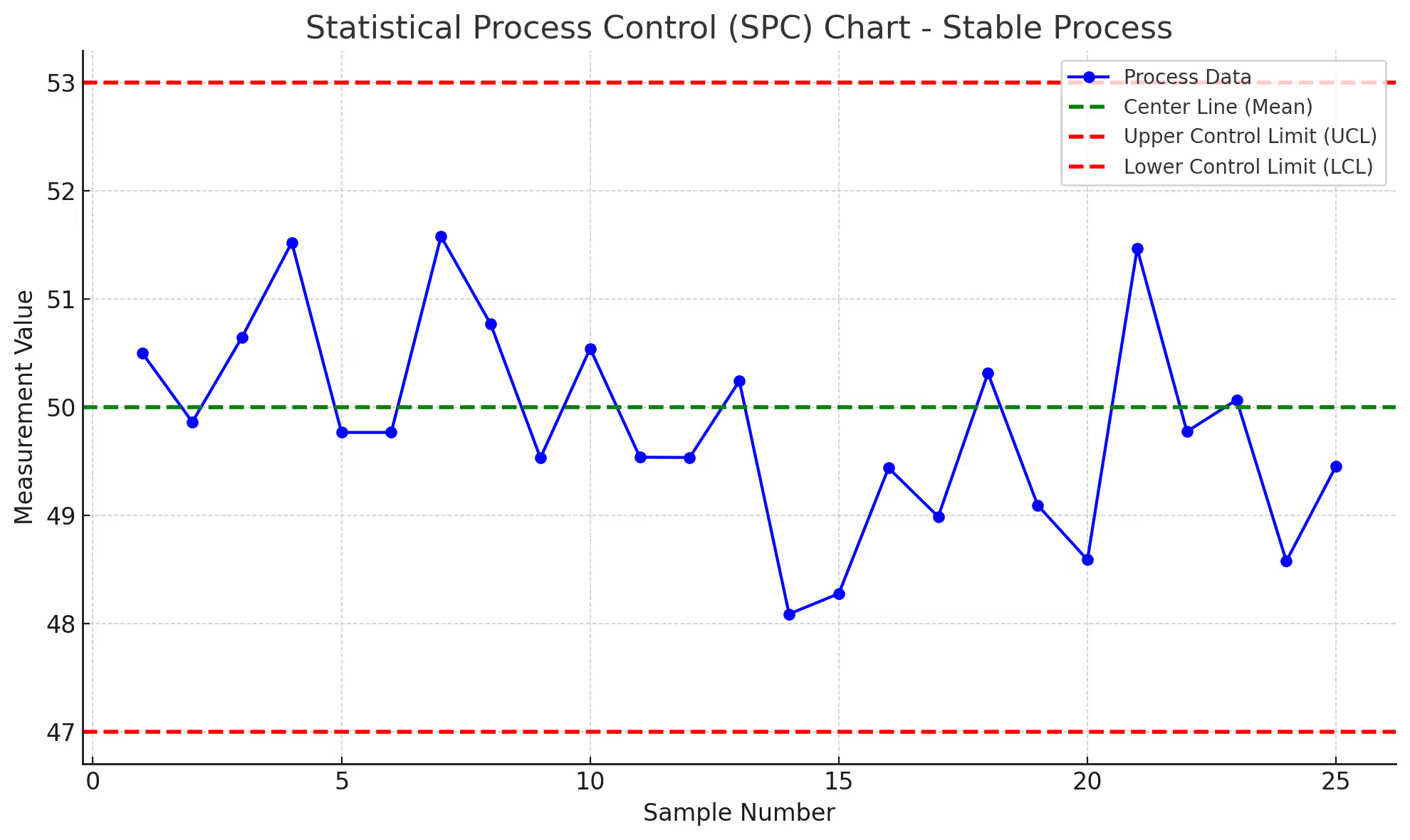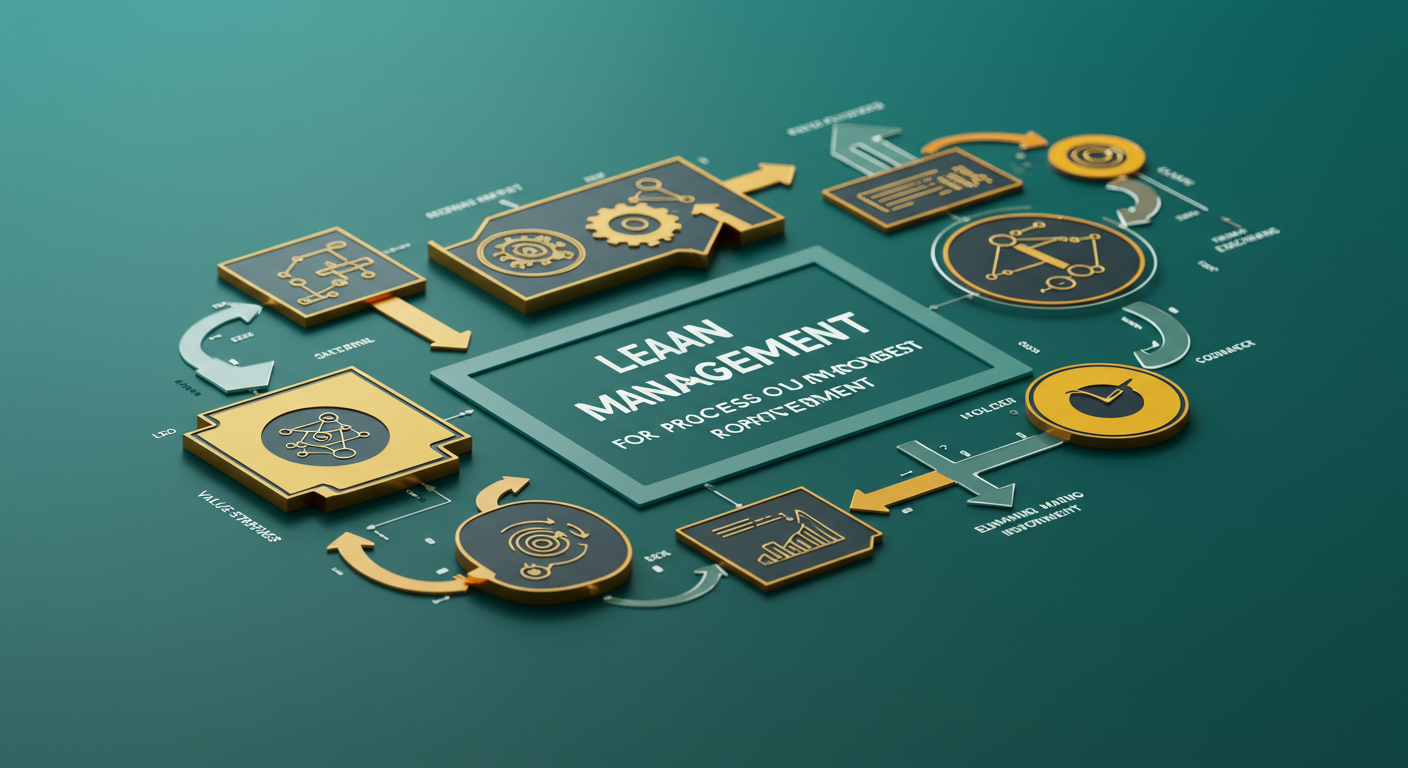🎯 Quick Answer
What: The Lean Six Sigma belt system provides hierarchical certification levels (White, Yellow, Green, Black, Master Black) that validate expertise in process improvement methodologies.
Why It Matters: Belt certification can increase earning potential by 15-40% while providing organizations with validated expertise for driving operational excellence.
How to Apply: Start with Yellow or Green Belt based on your role, complete required training and projects, then progress based on career goals and organizational needs.
Expected Results: Green Belts typically deliver $100K-$500K in annual improvements, Black Belts $500K-$2M, and Master Black Belts influence enterprise-wide transformations worth millions.
The Certification Maze
A quality manager at a regional hospital stares at her screen, comparing certification programs. ASQ offers one path. IASSC presents another. Her company suggests a third option. Each promises career advancement. Each costs thousands.
Which belt? Which provider? Which investment makes sense?
Meanwhile, across town, a manufacturing engineer with a Black Belt certification struggles to get projects approved. The certificate hangs on his wall. His improvement ideas sit in emails.
Same certification system. Completely different realities.
The Pattern Across Industries
After training and mentoring hundreds of belt candidates across semiconductor manufacturing, oil operations, and hospital systems, one truth emerges consistently:
Certification creates capability. Application creates value.
The belt system works brilliantly when understood as a competency framework. It fails when treated as just another credential to collect. Understanding this distinction determines whether certification becomes a career catalyst or expensive wallpaper.
The Belt Hierarchy Decoded
The Lean Six Sigma belt system borrows from martial arts, creating a visual progression of expertise. But unlike martial arts, where belts represent time and technique, Lean Six Sigma belts represent depth of analytical capability and scope of organizational impact.
⬜ White Belt: The Foundation (4-8 hours training)
White Belt certification introduces basic Lean Six Sigma concepts and terminology.
What White Belts Actually Do:
Support improvement teams with data collection
Participate in process mapping exercises
Apply basic problem-solving tools
Identify waste in their immediate work area
The Reality Check: Many organizations skip White Belt entirely, starting with Yellow. However, companies that train entire departments at White Belt level create a common language that accelerates all future improvements.
Success Example: A 500-bed medical center trained all nursing staff as White Belts. Result? Identified 147 improvement opportunities in the first month. Small changes, massive cumulative impact.
Investment Required:
Training: $0-$200 (often free online)
Time: 4-8 hours
Certification exam: Optional
ROI: Creates awareness, not direct savings
📒 Yellow Belt: The Contributor (2-3 days training)
Yellow Belts understand DMAIC methodology and can contribute meaningfully to improvement projects.
Core Competencies:
Basic process mapping
Simple data collection and analysis
Root cause analysis participation
Waste identification techniques
Standard problem-solving tools
Where Yellow Belts Excel: Yellow Belts shine in departmental improvements. They spot inefficiencies others miss because they work within the processes daily.
Cross-Industry Applications:
Manufacturing: Line operators identifying changeover waste Healthcare: Nurses streamlining medication administration Oil & Gas: Field technicians improving safety procedures
The Overlooked Value: Organizations often underestimate Yellow Belts. Yet analysis shows 60% of quick wins come from Yellow Belt observations. They see what Black Belts might miss: the daily friction points that compound into major inefficiencies.
Investment & Returns:
Training cost: $500-$1,500
Time investment: 2-3 days
Typical project value: $10K-$50K
Career impact: 5-10% salary increase
📗 Green Belt: The Project Leader (2-3 weeks training)
Green Belts represent the backbone of Lean Six Sigma deployment. They lead focused projects while maintaining regular job responsibilities.
Advanced Capabilities:
Statistical analysis using software
Hypothesis testing
Process capability analysis
Design of experiments (basic)
Project management
Team facilitation
Change management
The 80/20 Rule of Green Belts: Experience across industries reveals Green Belts deliver 80% of improvement value with 20% of the statistical complexity Black Belts employ. This makes them incredibly valuable for organizations.
Project Scope Patterns:
| Industry | Typical Green Belt Project | Average Impact |
|---|---|---|
| Healthcare | Reduce ER wait times in triage | $200K-$400K |
| Manufacturing | Decrease defect rates on Line 3 | $150K-$350K |
| Oil & Gas | Optimize maintenance scheduling | $300K-$600K |
| Retail | Improve inventory accuracy | $100K-$250K |
The Certification Journey:
Complete classroom/online training (80-120 hours)
Pass written examination (100-150 questions)
Complete 1-2 real projects with measurable results
Document project savings and methodology
Common Pitfall: Organizations often certify Green Belts without providing project opportunities. Result? Capable people without application avenues. Ensure project pipeline before training.
Investment & Career Impact:
Training: $2,000-$4,000
Time: 2-3 weeks training + 3-6 months project work
Salary increase: 10-20%
Annual project value: $100K-$500K
⬛ Black Belt: The Transformation Expert (4-5 weeks training)
Black Belts lead complex, cross-functional projects that transform organizational performance.
Advanced Statistical Mastery:
Multiple regression analysis
Advanced DOE (Design of Experiments)
Statistical modeling
Predictive analytics
Time series analysis
Multivariate analysis
But Statistics Aren't Everything: The best Black Belts combine analytical excellence with organizational navigation skills. They speak three languages fluently: statistics, operations, and executive.
Black Belt Project Characteristics:
Cross multiple departments
Address systemic issues
Require culture change
Impact strategic metrics
Duration: 6-12 months
Value: $500K-$2M
Real Implementation Stories:
Semiconductor Manufacturing: Black Belt identified correlation between supplier material variation and yield losses. Solution required supplier development, process changes, and new inspection protocols. Result: 12% yield improvement worth $8M annually.
Multi-Hospital System: Black Belt led sepsis mortality reduction across five facilities. Standardized protocols, implemented predictive analytics, and created rapid response systems. Reduced mortality 34%, saved 127 lives annually.
Offshore Platform: Black Belt analyzed 5 years of incident data, identifying systemic handoff failures. Redesigned shift change protocols using aviation industry practices. Zero serious incidents following implementation.
The Full-Time Question: Should Black Belts be full-time or part-time roles?
Pattern Analysis:
Organizations with full-time Black Belts show 3x better ROI
Part-time Black Belts struggle with project momentum
Optimal: 2-year full-time rotation, then return to operations
Certification Requirements:
Complete advanced training (160-200 hours)
Pass comprehensive exam (150-200 questions)
Lead 2-3 significant projects
Demonstrate financial impact ($500K minimum)
Often requires Green Belt experience first
Investment & Returns:
Training: $4,000-$8,000
Time: 4-5 weeks training + 12-18 months projects
Salary premium: 20-35%
Annual value delivered: $500K-$2M
⬛⬛ Master Black Belt: The Enterprise Architect (Extensive experience required)
Master Black Belts shape organizational excellence strategy, mentor other belts, and drive enterprise transformation.
Beyond Projects to Systems: Master Black Belts don't just solve problems. They design problem-solving systems. They see patterns across projects and create frameworks that institutionalize improvement.
Core Responsibilities:
Train and mentor Black Belts and Green Belts
Develop deployment strategy
Create organizational curriculum
Validate financial benefits
Innovate methodologies
Bridge operations and strategy
The Multiplier Effect: One effective Master Black Belt typically influences:
10-15 Black Belts
30-50 Green Belts
Hundreds of Yellow Belts
Enterprise-wide culture
What Distinguishes Master Black Belts:
Statistical expertise alone doesn't create Master Black Belts. Pattern recognition across industries and the ability to adapt methodologies to context determines success.
Real Examples:
Adapted aerospace mistake-proofing to surgical procedures
Transferred refinery turnaround practices to hospital renovations
Applied semiconductor contamination control to pharmaceutical manufacturing
The Experience Requirement: No shortcuts exist to Master Black Belt. Typical progression:
3-5 years as Black Belt
50+ projects led or mentored
Demonstrated innovation in methodology
Proven ability to teach and develop others
Strategic thinking capability
Compensation Reality:
Salary range: $120K-$200K+
Consulting rates: $2,000-$5,000/day
Value influenced: $10M-$100M annually
Choosing Your Certification Path
The Strategic Questions
Before pursuing any belt, answer three questions:
1. What problem am I solving?
Personal career advancement?
Organizational capability building?
Specific project leadership needs?
2. What support exists?
Will you get project opportunities?
Does leadership champion the methodology?
Are resources available for implementation?
3. What's the real investment?
Beyond training costs, consider time
Opportunity cost of projects
Ongoing education requirements
Provider Comparison: ASQ vs IASSC vs Others
The certification landscape includes multiple providers, each with strengths:
| Provider | Strengths | Considerations | Best For |
|---|---|---|---|
| ASQ | Industry recognition, comprehensive body of knowledge | Expensive, extensive requirements | Traditional industries, quality professionals |
| IASSC | Globally recognized, standardized approach | Less hands-on, more theoretical | International careers, consulting |
| University Programs | Academic rigor, networking | Time-intensive, costly | Career changers, executives |
| Corporate Internal | Customized to company needs | Limited external recognition | Internal advancement |
The Reality: Provider matters less than application. A Green Belt from an unknown provider who delivers results outperforms a prestigious Black Belt who doesn't.
Implementation Patterns That Work
Success Pattern 1: The Cascade Approach
Start with executive awareness (White Belt), develop a core of Black Belts, then cascade Green and Yellow Belt training based on project needs.
Why This Works:
Creates pull from leadership
Ensures project pipeline
Builds gradually
Success Pattern 2: The Pilot Team
Select high-potential employees across levels, train simultaneously, and have them work on a breakthrough project together.
Why This Works:
Creates immediate momentum
Demonstrates value quickly
Builds internal champions
Success Pattern 3: The Industry Translation
Bring in expertise from other industries, combine with internal knowledge, and create hybrid approaches.
Why This Works:
Fresh perspectives break paradigms
Cross-pollination accelerates innovation
Prevents "we're different" syndrome
The ROI Reality
Individual ROI
Belt certification typically pays for itself within 12-18 months through:
Salary increases (10-35%)
Bonus eligibility
Promotion opportunities
Consulting potential
Organizational ROI
Well-executed belt programs deliver:
Year 1: 0.5-1x investment (learning curve)
Year 2: 2-3x investment
Year 3+: 5-10x investment
Critical Success Factor: Organizations achieving these returns share one characteristic: they treat certification as the beginning, not the end.
Common Pitfalls to Avoid
❌ The Certification Mill Trap
Online programs promising Black Belt certification in weeks flood the market. They deliver certificates, not capability.
Red Flags:
No project requirements
Purely online with no interaction
Certificates without examination
Unrealistically low prices
No ongoing support
❌ The Academic-Practice Gap
Some programs excel at teaching statistics but fail at practical application.
Warning Signs:
All theory, no real cases
Instructors without field experience
No industry-specific examples
Focus on tools over thinking
❌ The One-Size-Fits-All Mistake
Beware programs that don't acknowledge industry differences.
Healthcare isn't manufacturing. Oil platforms aren't offices.
Each industry requires adapted approaches while maintaining methodological rigor.
Your Belt Journey Roadmap
For Individual Contributors
Start Here: Yellow Belt
Next Step: Green Belt if you want to lead projects
Timeline: 6-12 months
For Managers
Start Here: Green Belt (skip Yellow)
Next Step: Black Belt for strategic impact
Timeline: 18-24 months
For Executives
Start Here: Executive White Belt overview
Next Step: Sponsor others' certification
Timeline: 1-2 days initial, ongoing engagement
For Career Changers
Start Here: Green Belt with strong project
Next Step: Black Belt to establish credibility
Timeline: 12-18 months intensive
The Bottom Line
The Lean Six Sigma belt system provides a proven framework for developing process improvement capability. But belts alone don't drive improvement.
Success requires:
Real project application
Organizational support
Continuous learning
Cross-industry perspective
Organizations that understand this distinction build sustainable competitive advantage. Those that chase certifications accumulate expensive paper.
After 35+ years implementing Lean Six Sigma across continents and industries, the pattern remains consistent:
The belt enables. The application transforms. The thinking endures.
Choose your path based on where you want to impact, not just what you want to earn. Because in the end, the value you create determines the value you receive.
📊 Final Data Point: Professionals who focus on delivering project value rather than collecting certifications earn 45% more over their careers and report 2x higher job satisfaction scores.
Frequently Asked Questions
Which Six Sigma belt should I get first?
Most professionals should start with Green Belt.
Yellow Belt provides awareness but limited capability. Green Belt delivers enough depth to lead meaningful projects while maintaining your regular role. Skip White and Yellow if you're committed to serious capability building.
Exception: If you're in senior leadership, start with executive White Belt overview to understand the methodology, then sponsor others' development.
What is the difference between ASQ and IASSC certification?
Both provide credible certification, but differ in approach:
ASQ (American Society for Quality):
Requires work experience (3 years for Black Belt)
Mandates project completion with affidavit
More expensive but widely recognized
Focuses on quality profession
IASSC (International Association for Six Sigma Certification):
No experience requirements
Exam-only certification
Globally standardized
More accessible but less rigorous
Recommendation: ASQ for quality professionals in traditional industries. IASSC for international careers or quick credentialing.
How much does Six Sigma certification really cost?
Total investment goes beyond training fees:
| Belt Level | Training | Exam | Materials | Time Value | Total Investment |
|---|---|---|---|---|---|
| Yellow Belt | $500-1,500 | $200 | $100 | $1,000 | $1,800-2,800 |
| Green Belt | $2,000-4,000 | $300 | $200 | $5,000 | $7,500-9,500 |
| Black Belt | $4,000-8,000 | $400 | $300 | $15,000 | $19,700-23,700 |
Time value represents opportunity cost of training and project time.
ROI typically occurs within 12-18 months through salary increases and project savings.
Can I skip Green Belt and go straight to Black Belt?
Technically yes, but success rates drop significantly.
Programs allowing direct Black Belt certification exist, but field data shows:
70% success rate for Green Belt → Black Belt progression
40% success rate for direct Black Belt
90% of effective Black Belts held Green Belt first
Green Belt provides essential foundation in:
Project management
Team dynamics
Basic statistics
Organizational navigation
Recommendation: Only skip Green Belt if you have extensive project management and statistical analysis experience.
Is online Six Sigma certification legitimate?
Online certification can be legitimate if it includes:
Structured curriculum with measurable learning objectives
Real interaction with instructors
Practical exercises and simulations
Rigorous examination
Project requirements for certification
Red flags for questionable programs:
Certification in days or weeks
No examination required
Extremely low prices (under $500 for Black Belt)
No ongoing support or community
Generic content without industry examples
Hybrid models work best: Online learning supplemented with in-person workshops and real project application.
Certification creates capability. Application creates value. Choose your belt wisely.
Transform your career through Lean Six Sigma mastery.
Ready to Begin Your Belt Journey?
🎓 Explore our detailed guide: Read "What is Lean Six Sigma? The $4.4 Billion Field Reality" for foundational understanding before pursuing certification.
🏭 Learn from real implementations: Discover our industry-specific case studies showing how different belt levels drive value across semiconductor manufacturing, healthcare systems, and oil & gas operations.
Related Reading:
Statistical Process Control: From Semiconductor Manufacturing to Any Factory Floor (Technical Guide)
Cross-Pollination: How Oil Rig Safety Protocols Save Lives in Hospitals (Cross-Industry Insights)
External Resources:
ASQ Certification - American Society for Quality belt certification programs
IASSC - International Association for Six Sigma Certification
Council for Six Sigma Certification - Career progression guides and resources
International Journal of Lean Six Sigma - Academic research and case studies
Keywords:
lean six sigma belts, six sigma certification, six sigma black belt, six sigma green belt, lean six sigma certification, six sigma yellow belt, six sigma white belt, master black belt, belt certification, lean six sigma training, ASQ certification, IASSC certification, six sigma certification cost, belt hierarchy, certification levels, project leadership, process improvement certification, quality management certification, DMAIC methodology, statistical analysis, continuous improvement training, how to get six sigma certification, which six sigma belt should I get, lean six sigma certification requirements, six sigma black belt vs green belt, is six sigma certification worth it









